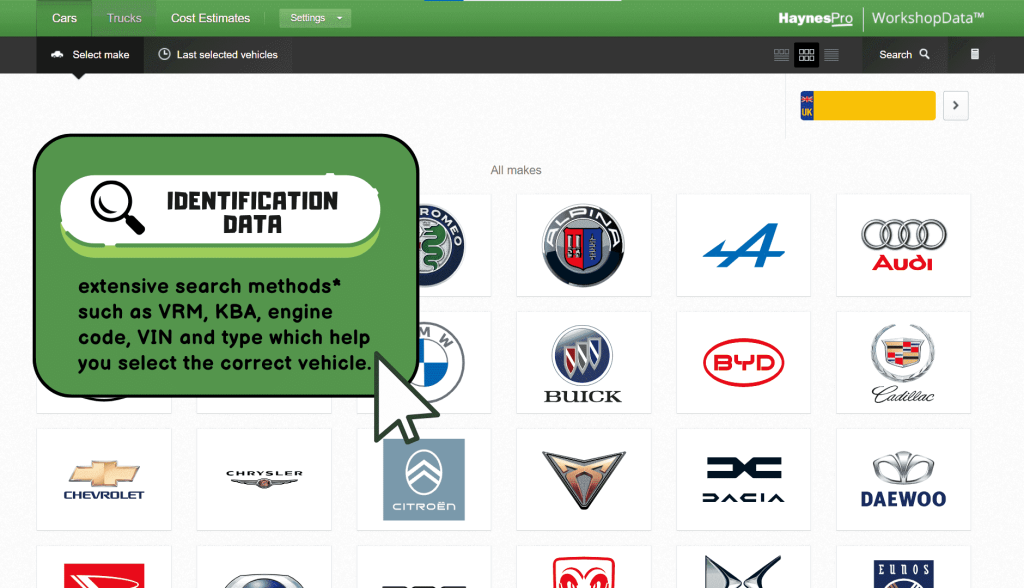The automotive industry has undergone tremendous evolution in recent years, driven by technological innovations that enhance safety, performance, and sustainability. Among the most groundbreaking developments is the rise of smart tires, a transformative advancement that is reshaping how vehicles interact with the road. These high-tech tires are not just designed to roll—they are equipped with sensors that provide real-time data on tire health, road conditions, and vehicle performance. As these smart technologies continue to evolve, smart tires are quickly becoming an essential feature in the future of automotive design and functionality.
What are smart tires?
At their core, smart tires are traditional tires enhanced with embedded sensors. These sensors collect and transmit critical data about the tire’s performance, such as pressure, temperature, wear, and even the condition of the road. The real-time data allows vehicles to adjust their performance on the fly, improving safety, efficiency, and driving experience.
Unlike traditional tires, which offer only basic functionality, smart tires continuously monitor the tire’s vital metrics. For example, sensors detect underinflation or overinflation, sending alerts to drivers or the vehicle’s onboard system. This can help prevent dangerous tire failures and reduce the likelihood of accidents. Moreover, the data can also be used to optimize vehicle systems such as suspension and traction control for improved handling.
The technology behind smart tires
The technology that powers smart tires is both simple and sophisticated. At the heart of the system are sensors embedded within the tire that monitor essential metrics, including pressure, temperature, and tread wear. These sensors are specifically designed to withstand the harsh conditions inside a tire, including extreme heat, physical stress, and friction.
The data collected by these sensors is wirelessly transmitted to the vehicle’s onboard systems, where it is processed and analyzed in real-time. This information can be displayed on the vehicle’s dashboard or mobile app, and in some cases, the vehicle can adjust its performance automatically based on the data received. For example, some smart tires can work with a vehicle’s adaptive suspension or traction control systems to optimize driving in different conditions, from rain to rough terrain.
Types of tire sensors include:
- Tire-mounted sensors: Located within the inner lining of the tire, these sensors monitor pressure, temperature, and tire identification.
- Valve-mounted sensors: These are installed inside the rim, providing data on pressure, temperature, and additional functionalities like tire fill assistance and burst warnings.
- Wheel-mounted sensors: These focus on monitoring air pressure and sending data to the vehicle’s system. Some models even provide more detailed analysis, such as monitoring the pressure of each individual tire.
Benefits of smart tires
- Improved safety: Safety is one of the biggest advantages of smart tires. Tires are often taken for granted, but they are essential for a safe driving experience. Improper tire maintenance—such as underinflation—can contribute to a significant number of road accidents. Smart tires actively monitor tire pressure, temperature, and wear, providing real-time alerts to drivers if something goes wrong. For instance, companies like Goodyear have developed smart tires that can detect hazardous road conditions such as snow, ice, or rain, transmitting this data to the vehicle’s advanced driver-assistance systems (ADAS). In response, these systems can adjust braking and traction controls, reducing the risk of accidents, especially in difficult driving conditions.
- Boosted fuel efficiency: Maintaining optimal tire pressure is crucial for enhancing fuel efficiency. Underinflated tires increase rolling resistance, causing the engine to work harder and consume more fuel. Studies indicate that for every 1 PSI drop in tire pressure, fuel economy decreases by approximately 0.2%. Smart tires address this issue by continuously monitoring tire pressure and providing real-time alerts when it falls below the optimal level. This proactive approach helps maintain ideal inflation levels, thereby improving fuel efficiency. In fleet operations, implementing smart tire technology has led to a reported 6% increase in fuel efficiency. For electric vehicles (EVs), maintaining proper tire pressure is even more critical. Properly inflated tires can improve gas mileage by up to 3%, which translates to more range per charge, enhancing the vehicle’s overall efficiency.
- Longer tire lifespan and reduced maintenance costs: Traditional tire maintenance is often reactive—drivers notice wear and tear when it’s too late. Smart tires, on the other hand, offer proactive monitoring. With sensors that detect uneven wear, low tread depth, or other signs of damage, drivers can address issues early, preventing more severe problems down the road. This proactive approach not only extends tire life but also reduces the need for premature replacements and costly repairs. For fleet operators, this can translate to significant savings over time. Additionally, the data gathered by smart tires can be analyzed to spot patterns, further optimizing tire usage and extending lifespan.
- Enhanced performance: Beyond monitoring tire health, smart tires can enhance vehicle performance. By gathering data on temperature, load, and pressure, these tires provide real-time insights that improve vehicle handling. This integration with a vehicle’s suspension and traction systems results in a smoother driving experience and better control, especially in challenging environments like snow, rain, or off-road terrain. While this is particularly beneficial for sports cars and high-performance vehicles, smart tires are also being used in everyday vehicles to improve overall performance.
- Environmental impact and sustainability: In today’s world, sustainability is a growing concern, and smart tires contribute by reducing both fuel consumption and tire waste. By maintaining proper inflation and optimizing tire performance, smart tires help reduce carbon emissions. Furthermore, they extend tire life, meaning fewer tires end up in landfills.
Challenges and limitations
Despite their many benefits, there are challenges that need to be addressed before smart tires can become ubiquitous:
- Cost: Smart tires are currently more expensive than traditional tires due to the advanced technology they incorporate. The sensors, wireless communication, and specialized materials all contribute to a higher price point. However, as the technology matures and production scales up, the cost is expected to decrease, making smart tires more accessible to a broader audience.
- Durability: Smart tires are subjected to extreme conditions, including heat, heavy loads, and rough roads. The sensors embedded within them need to be durable enough to withstand these stresses and continue functioning accurately throughout the tire’s lifespan. Ongoing research is focused on improving the durability and longevity of these sensors to ensure that they can reliably monitor tire health for the long term.
- Data security and privacy: Since smart tires generate a significant amount of data about tire conditions and road conditions, there are concerns about the security and privacy of this information. Like any connected device, smart tires are vulnerable to cyber threats and data breaches. Manufacturers must implement robust encryption and privacy protocols to protect the data and ensure that consumers’ personal information is not misused.
- Integration and compatibility: Not all vehicles are equipped to interface with the data generated by smart tires. For these systems to reach their full potential, they must integrate seamlessly with a wide range of vehicle models and systems. Standardization across vehicle types is necessary to ensure that all drivers can benefit from smart tire technology.
The future of smart tires: Emerging trends
Smart tires are rapidly evolving, with several exciting developments on the horizon:
- Integration with smart infrastructure: As cities evolve into smart environments, smart tires could integrate with intelligent infrastructure like traffic lights, road sensors, and vehicle-to-vehicle communication systems. This could optimize traffic flow, improve safety, and even help vehicles adjust to changing road conditions in real time.
- Airless smart tires: Airless tires eliminate the need for inflation, offering benefits such as increased durability and reduced risk of punctures. When paired with smart sensors, these airless tires can still monitor tire health in real time, while providing feedback on road conditions and wear patterns. This combination could significantly reduce maintenance costs and improve tire reliability.
- Self-healing tires: Self-healing tires contain advanced materials capable of automatically sealing small punctures or tears. This could drastically reduce the need for frequent tire replacements and improve overall safety by reducing the risk of blowouts caused by minor damage.
- Dynamic tread patterns: Future smart tires could feature dynamic tread patterns that adjust in real time based on road conditions. For example, a tire could change its tread pattern for better grip on wet or icy roads or adapt to rough terrain for improved durability and performance.
Key industry players leading the charge
The major players in the smart tire industry include both traditional tire manufacturers and technology companies that are focusing on integrating advanced sensors and smart features into tires. Here are the most prominent ones:
- The SMART Tire Company: This innovative company is pushing the boundaries of tire technology with airless tire designs combined with smart sensors, sustainability, and durability as their core focus.
- Goodyear: A leader in tire innovation, Goodyear has developed smart tires with sensors to monitor tire health and road conditions in real-time. They focus on improving safety, fuel efficiency, and vehicle performance.
- Michelin: Michelin is a key player known for its work on airless tires, self-healing tire technology, and the integration of smart sensors. They focus on sustainability, tire durability, and performance optimization.
- Pirelli: Pirelli is heavily investing in smart tire technology, incorporating sensors into their tire designs for enhanced vehicle performance. They also explore concepts like airless tires and dynamic tread patterns to improve tire functionality.
- Bridgestone: Bridgestone has also made significant strides in smart tire technology, working on sensor integration and connectivity to optimize tire performance, safety, and efficiency. They are particularly focused on developing smart tires for electric and autonomous vehicles.
- Continental: A major tire manufacturer, Continental is focusing on integrating tire sensors to monitor parameters like pressure, temperature, and wear, providing real-time data to improve vehicle performance and safety.
The rise of smart tires represents a major leap forward in automotive technology. With the ability to enhance safety, improve fuel efficiency, extend tire life, and reduce environmental impact, smart tires are set to transform the driving experience. As these technologies become more affordable and accessible, smart tires could soon become a standard feature in vehicles worldwide, making transportation safer, more efficient, and more sustainable for all.
To stay ahead, automotive professionals must be equipped with the right tools to navigate the complexities of modern vehicle technology. This is where advanced diagnostic and repair software, like HaynesPro, becomes invaluable. By providing detailed technical information, repair procedures, and accurate diagnostics for a wide range of vehicles, HaynesPro helps repair shops stay in sync with the rapidly evolving automotive landscape. As tire technologies, including the rise of smart tires, and vehicle models continue to advance, HaynesPro ensures that repair shops can deliver high-quality service, supporting both traditional vehicles and the increasing number of vehicles equipped with smart tires.
With HaynesPro’s comprehensive solutions, workshops can efficiently manage the increased demand for maintenance and diagnostics, helping them stay competitive in this rapidly evolving automotive industry.
Take advantage of our 7-day free trial to discover how this software can transform your operations and keep you ahead of the curve.
Sources:
https://www.theverge.com/2025/1/7/24336892/goodyear-tire-sightline-aeb-rain-snow
https://www.ptc.com/en/blogs/iiot/intelligent-tires
https://www.automotive-fleet.com/10225058/smart-tire-technology-for-light-medium-duty-fleets
https://driversed.com/trending/how-does-tire-pressure-affect-fuel-economy








